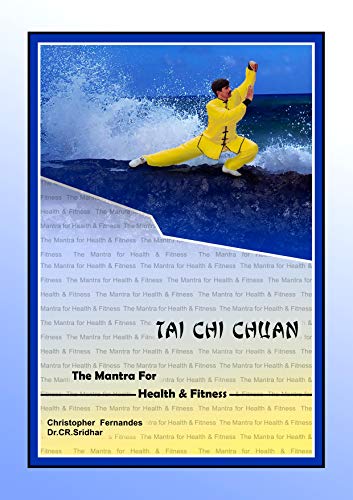Tai Chi Chuan: The Mantra for Health and Fitness
Tai Chi Chuan means, “Supreme Ultimate Fist”. In Chinese literature Chuan is also used, frequently for the whole body. Hence Tai Chi also means, “Supreme Ultimate Body”. Tai Chi consists of a series of gentle, coordinated and smooth movements of hands, torso and legs. The breath may or may not be coordinated with the movements. There are two aspects of Tai Chi: the external and internal. The external form of Tai Chi stresses on strength, speed and stamina. Unlike many martial art forms Tai Chi forms are extended and extensive. The internal form of Tai Chi stresses on smoothness, slowness and gentleness of movements. These movements still need superb concentration, coordination and skill. The internal form is the one that is becoming quite popular. It is this aspect of Tai Chi that is most useful to a modern man, whose life is fast, stressful and debilitating. Tai Chi is pure motion; unhindered, unhurried and unlimited. Since the entire movement is slow, Tai Chi gently relaxes the skeletal muscles and the joints. The slow and gentle movements raise the pulse rate of the body only marginally. But the body perspires profusely at the end of a Tai Chi session. The slow and coordinated movements need immense concentration. The mind and body both relax. At the end of a 30-minute practice session of Tai Chi, the practitioner is relaxed both mentally and physically. At the end of a 30 months practice, a serious practitioner would have acquired better bone mass and leaner but stronger muscles. He or she would have learnt to relax completely. Many of them would also have experienced, ‘Meditation in Movement’. Tai Chi is really suited for those who would like to slow down and experience the present. Yoga was developed by Indians, and Tai Chi by the Chinese. The techniques of Yoga were modified and adapted by Buddhists in Tibet. This system of exercises, under the broad category Tibetan Yoga, survives to this day among the Tibetans. As the techniques of Yoga traveled further north in to China they were modified and absorbed by Taoists. It is said that the system of martial arts developed in the Shaolin Temples were largely due to Bodhidharma, a Hindu monk from South India, who taught these techniques to the monks of the temple. Yoga Sutra of Patanjali, a definitive text on Yoga defines asanas as ‘that position which is comfortable and steady’. The original purpose of asanas was to make the body ready to assume a comfortable posture so that meditation could be done effectively. However the practitioners of Hatha Yoga discovered that these asanas had beneficial effects on the internal organs, opened certain energy channels and psychic centers in the body. Thus the focus of the asanas shifted from preparing the body to sit comfortably during meditation, to a system of exercises to keep the body healthy. A Tai Chi form will enable a student to experience the movement, cultivation of Chi, concentration, attention and meditation; all integrated into one experience. In addition, since Tai Chi consists of a series of dynamic movements, starting from one point to another, there is a sense of flow as well as a sense of completion. Many compare Tai Chi to a classical dance form. It is obviously a simplistic way of understanding Tai Chi. In any classical dance form the focus is on communicating a story to the audience. In Tai Chi you are communicating to your inner self, which is the ultimate meaning of life (Nirvana).
Buy on Amazon

